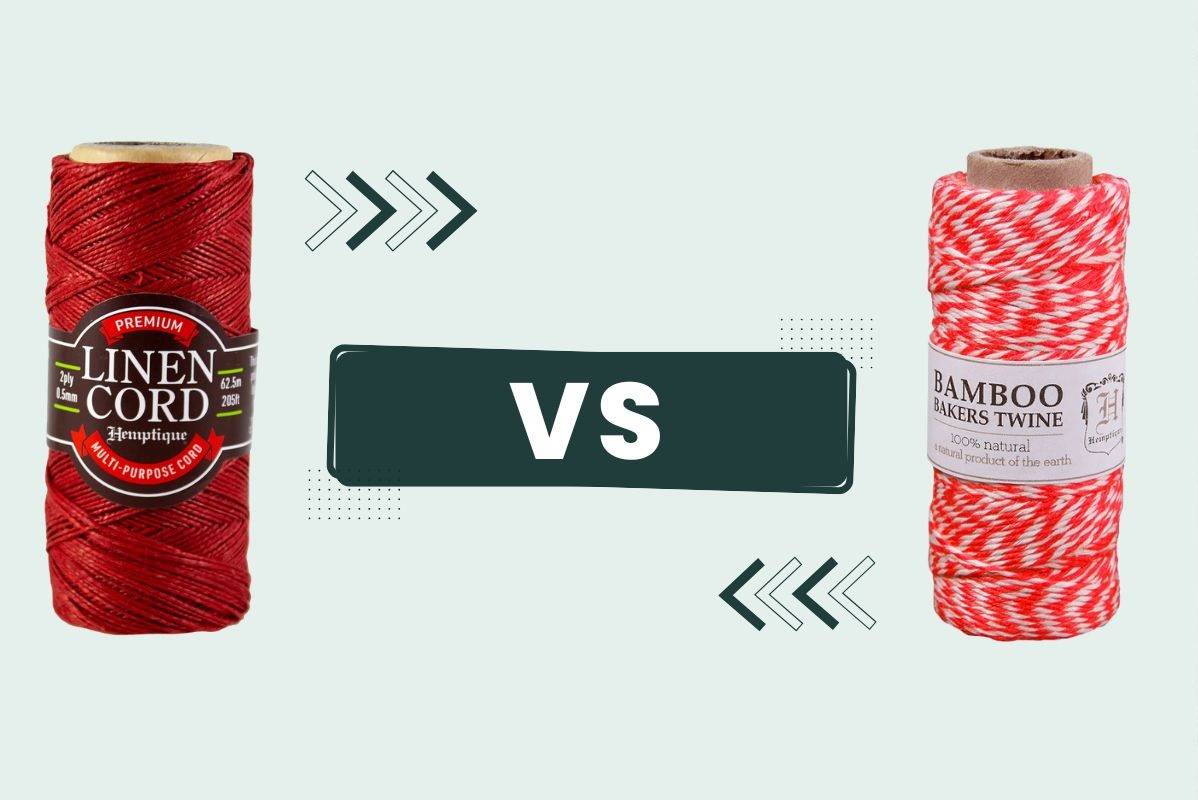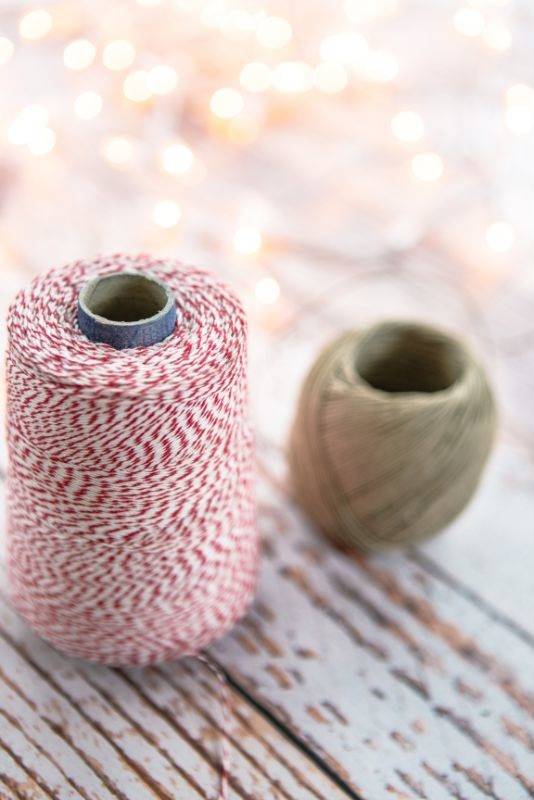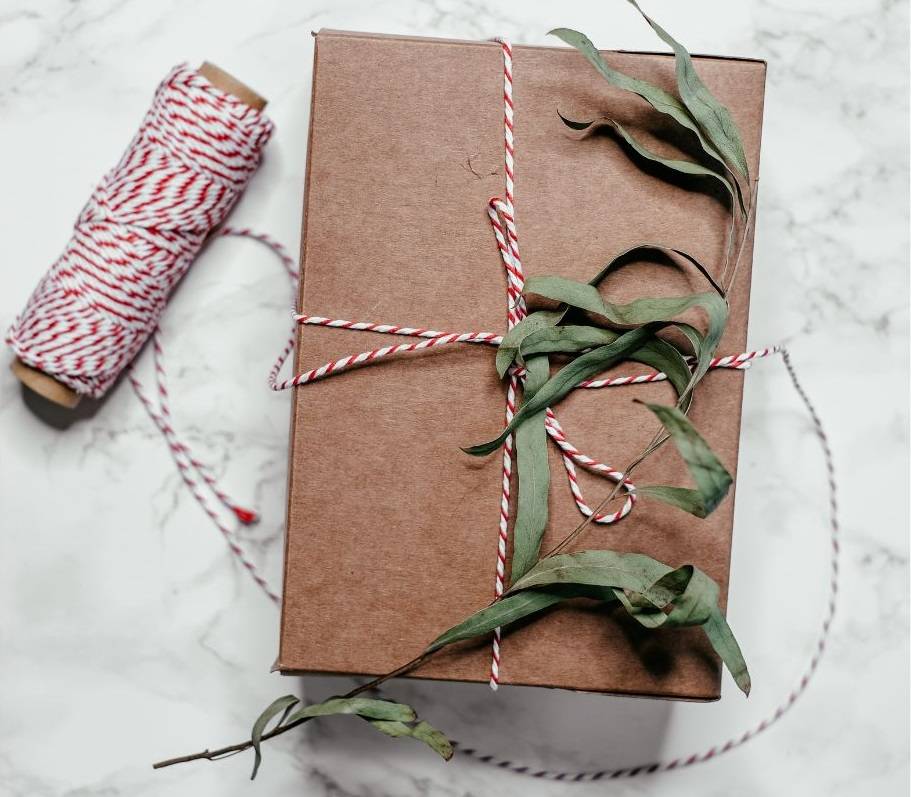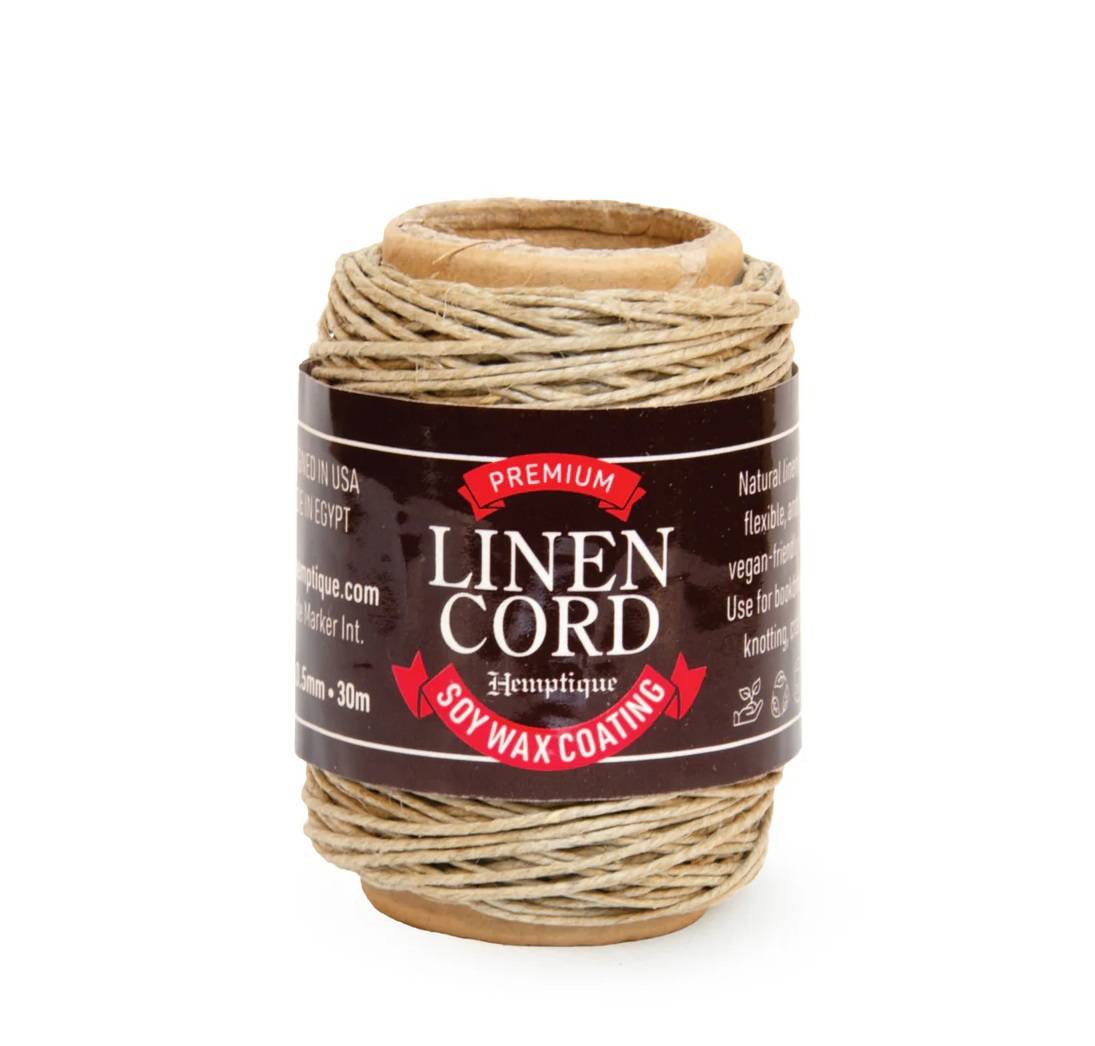Linen vs. Bamboo for Crafting: Choose the Right Fiber for Your Project
Understand the strengths of both natural cords so you can pick the one that works best for your craft, not just what’s trending.

Innovation & Quality
Developing and supplying premium-quality, sustainably grown, consumer products
100% Natural
Organically Grown and Ethically Sourced
hemp and other natural fiber products
Shipping
We offer fast shipping
Your order out within 1-3 days
Wholesale
Visit our wholesale portal to register or login to your account
Table of Contents:
Natural Crafting Starts with Hemptique
What Are Linen and Bamboo Cords Made From?
Linen vs Bamboo Cord: How They Perform in Popular Crafts
Best Uses of Linen and Bamboo Cord by Craft Type
Tactile & Visual Differences: What You’ll Notice When Working With Each Fiber
Eco-Friendly Crafting: Sustainability Differences Between Linen and Bamboo
Final Thoughts: It’s Not About Better, It’s About Fit
Natural Crafting Starts with Hemptique
What Are Linen and Bamboo Cords Made From?

Linen vs Bamboo Cord: How They Perform in Popular Crafts
Hand-Stitching and Threadwork
- Linen: Holds knots firmly, resists fraying and offers a bit of grip. Ideal for visible stitching, bookbinding, and reinforcement in leathercraft.
- Bamboo: Softer and smoother, making it easier to pass through tight spaces but more prone to slipping. Best for decorative stitching or low-tension seams.
Jewelry Making
- Linen: Great for macramé or structured designs that need to hold shape. Provides texture and body to bracelets, pendants or anklets.
- Bamboo: More flexible and fluid, better for woven, layered or braided styles. It is easier to wrap around findings or beads without bulk.
Wall Art and Weaving
- Linen: Adds structure and visual weight to wall hangings, frames or geometric designs. Its rustic look adds character.
- Bamboo: Drape-friendly and great for soft, flowing designs. Works well in fluid weaves, hanging loops or fiber art installations.
Gift Wrap and Tags
- Linen: Offers a classic, textured look. Perfect for rustic or organic presentation styles. Holds bows well.
- Bamboo: Has a sleeker finish and softer touch. Often chosen for modern, minimalist aesthetics.
Dyeing Projects
- Linen: Absorbs natural dyes well and holds color deeply. Ideal for botanical or tea dyeing techniques.
- Bamboo: Can be dyed but may require more prep. Color saturation is often lighter and may fade more quickly unless fixed properly.
Best Uses of Linen and Bamboo Cord by Craft Type
| Craft Type | Linen Cord Strengths | Bamboo Cord Strengths |
|---|---|---|
| Stitching & Bookbinding | Holds knots tightly, strong under tension | Smooth through paper, flexible for curves |
| Jewelry Making | Adds texture, keeps shape well | Soft on skin, ideal for braiding |
| Weaving & Wall Art | Firm structure, holds patterns sharply | Soft drape, flows well in looser designs |
| Wrapping & Tags | Classic, rustic finish | Sleek, modern look with smooth bows |
| Dyeing Projects | Absorbs dye evenly, keeps deep color | Softer tones, needs prep for strong color |

Tactile & Visual Differences: What You’ll Notice When Working With Each Fiber
Eco-Friendly Crafting: Sustainability Differences Between Linen and Bamboo
- Linen, made from the flax plant, is one of the lowest-impact textile fibers. Flax can grow in poor soil, needs little irrigation, and typically doesn’t require synthetic pesticides. The entire plant can be used, and mechanical processing means chemical use is minimal. When left untreated or uncoated, linen cord is fully compostable and breaks down naturally over time.
- Bamboo, while a fast-growing and renewable plant, often requires more intensive processing to become soft, usable cord. Most bamboo cords are made using viscose or rayon methods, which can involve chemicals during fiber extraction. However, bamboo still offers a better alternative than petroleum-based synthetics and high-quality bamboo cords like those offered by Hemptique are dyed using AZO-free, eco-friendly pigments.
- Linen is low-input and mechanically processed.
- Bamboo is high growth but typically more chemically processed.


